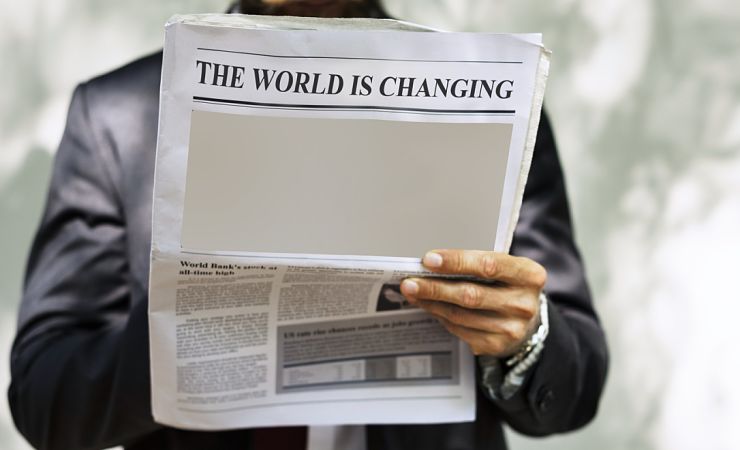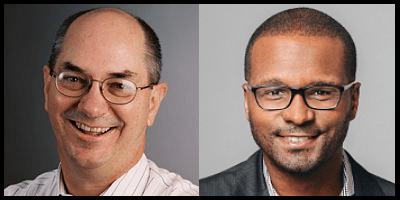Changing Perspectives, Changing Views: COVID and Agile Organizations
Today Chris Worley, professor of organizational theory and management at Pepperdine University’s Graziadio Business School, and Claudy Jules, the head Google’s Center of Expertise on Organizational Health and Change, offer context behind their commentary, “COVID-19’s Uncomfortable Revelations About Agile and Sustainable Organizations in a VUCA World,” in the Journal of Applied Behavioral Science. As they note in the introduction to that paper:
“[T]he crisis has revealed three implications for research and practice on agile and sustainable organizations in volatile, uncertain, complex, and ambiguous (VUCA) environments. First, how to characterize the COVID virus and our response to it is unclear; what is clear is that we were unprepared. Second, despite the rhetoric, too many organizations did not have the capabilities to respond. Saying you are agile does not make it so. Third, the COVID-19 pandemic reveals our community’s silence on structural inequality (e.g., financial, social, and racial). We enabled unethical positions from the safety of our positivistic and supposedly neutral values.

In our special section commentary for the Journal of Applied Behavioral Science (JABS), we discussed whether organizational responses to the COVID-19 pandemic revealed anything about our understanding of agile and sustainable organizations. We appreciate the opportunity here to speak to how those observations shifted and evolved.

An emergent motivation for our commentary was the intergroup perspective (Alderfer, 1985; 1987). Our professional/organizational and personal identities or group memberships shaped and then changed our observations and questions. As students of organization theory and development, we are deeply engaged in the study and application of agility and change processes in individual, interpersonal, group, and organizational contexts. In addition, as a white male professor/researcher at Pepperdine/USC and a black male executive at Google, respectively, we bring our own unique experiences to bear based on the group membership we each choose to adopt. When we brought more of our “selves” to the JABS commentary, we illustrated how important it is for organizations, like individuals, to engage in self-study, to learn from the here-and-now dynamics at play, and to put these learnings to work, if they ever wish to become agile and sustainable.
When we began writing, we adopted our shared professional roles – we had our organizational hats on. Before the crisis, organizations seemed happily but overly concerned about efficiency and we believed this tunnel focus left organizations unprepared for the pandemic (preparedness being an emergent property of agility). As our commentary appeared online, Thomas Friedman simultaneously made our point in his New York Times op-ed, “How We Broke the World.”
As the re-writing continued, the “data” kept changing. Daily, we heard about infection rates, death rates, and hot spots. We heard about furloughs, unemployment claims, and potential economic impacts. Then came the TV ads. The companies spending millions of dollars telling us how much they cared were the same ones announcing furloughs and layoffs of the workers who could least withstand the shock. It soon became clear that simply calling this crisis an epidemiological pandemic was missing the point. It was an elderly, black and Latino, front-line worker nightmare.
As we switched from common professional identities to uncommon personal ones, we became convinced that COVID-19 had revealed more than short-sighted organizational hubris; it also revealed our willful ignorance. COVID-19 proved the axiom – our society is built on structural inequalities. In the COVID-19 era, the rich have gotten richer and those with the fewest resources have suffered the most. And then the events leading up to the George Floyd protests happened…again. Same shit; different day.
A deeper question emerged that we had to ask: Do our theories of organization change and development really address the issues we profess to care about or are we just an “arm candy” photo-op with the 1%-ers?
Our academic and practice knowledge focuses on making organizations more agile, cultures more resilient, leaders more humble, and workforces more diverse under values of learning, participation, involvement, and inclusion. We think we are making bold, provocative recommendations to develop organizations, but the truth is, we barely scratch the surface of the tensions and contradictions that exist. Was this a personal insight about our own lack of boldness or a broader accusation about our field?
The challenge before us is one of changing “deep structure” (Gersick, 1991). We know – despite the rhetoric about how historic this moment is – that absent significant structural reform, things will return to the status quo. We’ve seen it before. And it’s possible that even structural reform of our institutions and their policies will not be enough. Rather, we may need to radically transform them, build them anew with refreshed assumptions. And who should be better prepared to help leaders address such change than the organization development community?
To begin, we will have to create a “negotiated order” (Nathan and Mitroff, 1991). Those who have contributed to structural bias and those marginalized, underrepresented groups who have been victimized by it will have to acknowledge their contributions. And in that fragile, vulnerable, and tense place, everyone will have to make a promise to move forward. The privileged will have to say “yes” to some changes that will reduce some of that privilege. The marginalized will be tasked with embracing these changes, for inequality is buried deep in the managerial psyche and the organization designs that reflect it.
Awareness is critical for change, but it is not determinant. It will absolutely require consistent and supported bottom-up pressure from the structurally disadvantaged. More importantly, it will require individual, organizational, and governmental as well as multi-sectoral (technical, educational, health care, policing, and housing among others) action. If the art and science of organization development is not up to this task, if this isn’t the moment we have been preparing for, then what have we been doing for the last 75 years?
References
Alderfer, C.P. (1985). Taking ourselves seriously as researchers. In D.N. Berg & K.K. Smith (Eds.), Exploring clinical methods for social research, (pp.35-70). Newbury Park, CA: SAGE.
Alderfer, C.P. (1987). An intergroup perspective on group dynamics. In J. Lorsch (Ed.), Handbook of organizational behavior, (pp.190-220). Englewood Cliffs, NJ: Prentice Hall.
Gersick, C. J. (1991). Revolutionary change theories: A multilevel exploration of the punctuated equilibrium paradigm. Academy of Management Review, 16(1), 10-36.
Nathan, M. & Mitroff, I. (1991). The Use of Negotiated Order Theory as a Tool for the Analysis and Development of an Interorganizational Field. The Journal of Applied Behavioral Science, 27(2), 163-180.






























































































